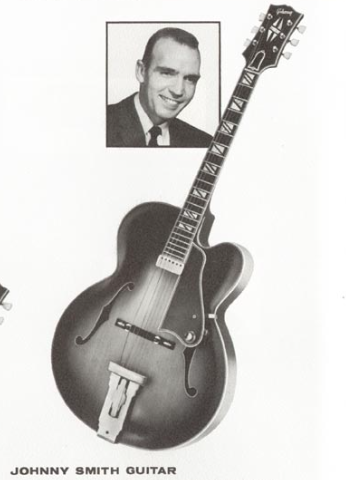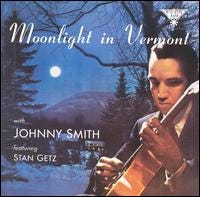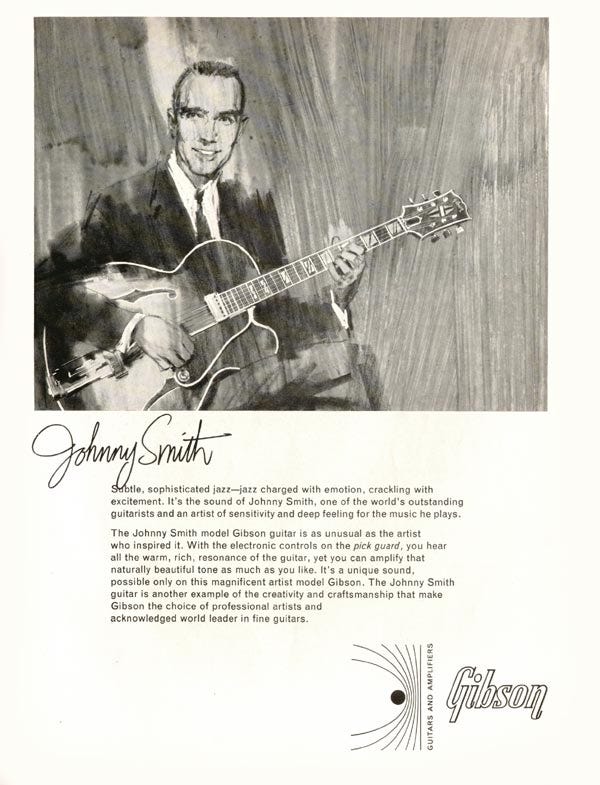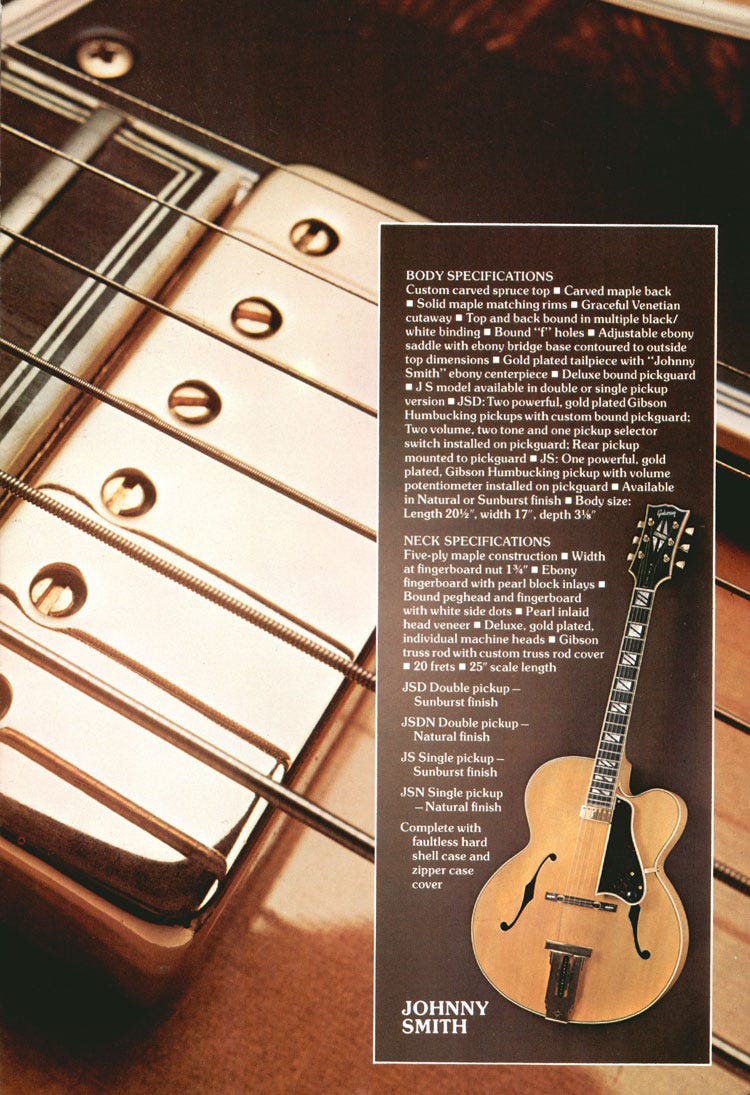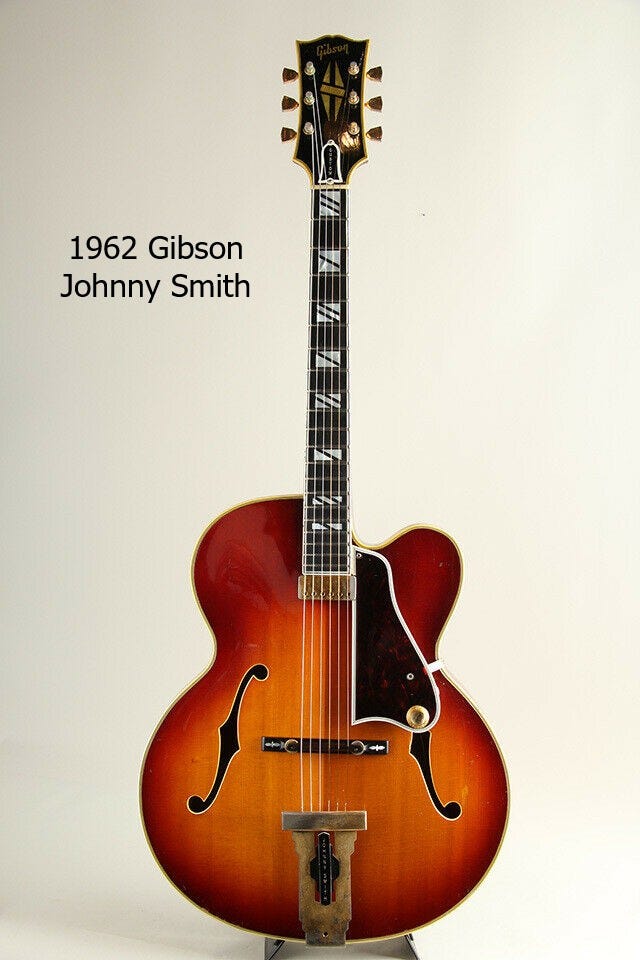“An arpeggiated melodic blues thing”
Your Lick of the Week with Ian Cowan
Ian’s friendly teaching style and mellow voice are equally as pleasant as the lick he shares this week. Ian beautifully breaks this lick down in bite size pieces and shares how he uses arpeggios up and down the neck.
Johnny Smith was an all-time great jazz guitarist. Those in the rock n’ roll world may know him for writing “Walk Don’t Run” in 1954 and made famous by The Ventures in 1961. Jazz fans know him for a huge catalog of music and his most commercially successful instrumental recording, “Moonlight in Vermont”.
At the peak of Johnny’s career his wife tragically died in childbirth along with their new baby in 1957. While he continued recording and writing into the next decade, Johnny essentially retired to Colorado Springs to raise his daughter and open a music store.
An important footnote in the Johnny Smith guitar lineage was an endorsement deal with Guild for his Johnny Smith Award electric archtop. After designing the guitar himself and providing the plans to Guild, they made so many unsatisfactory changes that Smith never played it.
The Guild contract expired in 1960 and here comes Ted McCarty, president of Gibson, knocking on the door. Literally that is, Ted had been after Johnny for several years about a signature guitar and when the opportunity finally arrived he traveled to Johnny’s house in Colorado Springs to work directly with him on the design.
Ted was on a tear in the early 60s signing signature jazz artists. The first two were Barney Kessel & Tal Farlow, followed by Johnny, and finally Trini Lopez in 1964.
From Johnny’s kitchen table he designed the guitar from scratch with full autonomy, blessed by McCarty himself. Once the designs made it back to Kalamazoo only minor cosmetic changes were introduced by Gibson, none of which presented an issue to Johnny.
In many ways the guitar Johnny designed was a hybrid of Gibson’s massive Super 400 and L5, but everything about it was his own. The scale length was 25”, body width 17” at the lower bout, and 3 ⅛” thick. Internal X-bracing was used instead of Gibson’s tone bars bracing, and a “floating” mini-humbucker at the neck, or more accurately it was attached to the neck instead of the guitar body. Just as the pickup was “floating” over the body, the volume control and output jack are mounted on the pickguard. Keeping these features off the top of the guitar enhanced the acoustic properties, a must for Johnny.
The guitar first appeared in a June 1961 Gibson catalog and started shipping the following year. At the time of its first offering, the MSRP was $795 for a sunburst, and $810 in natural finish making it the most expensive guitar Gibson offered.
In 1963 Gibson introduced the Johnny Smith Double with two pickups. Both guitars were staple offerings through 1989, the longest running signature model(s) ever. It was reissued as the LeGrand from 1993-2009.
Original 1962 Gibson Johnny Smith specs: Carved spruce top, Flame maple back and sides, Maple/walnut neck, Ebony fretboard and bridge, Gibson mini-humbucker (first time they appeared), Gibson L5 style tailpiece with Johnny’s name.
Another interesting footnote about Johnny’s guitar… he had a few other guitars :-). When Gibson left Kalamazoo for Nashville in 1984 he switched alliances to Heritage Guitars, the company founded by freshly unemployed Gibson employees that remained in Michigan. The Heritage Johnny Smith debuted in 1989.
But there’s more… seven years after Bill Schultz led the Fender buyout of Guild, Johnny ended up doing another signature guitar with the same company who messed it up the first time. It helped that he and Bill were good friends, and Bill tapped Bob Benedetto to handle the design and build set-up. The Guild Benedetto Johnny Smith Award landed in 2003, production numbers were less than 100, and only lasted a couple of years.

